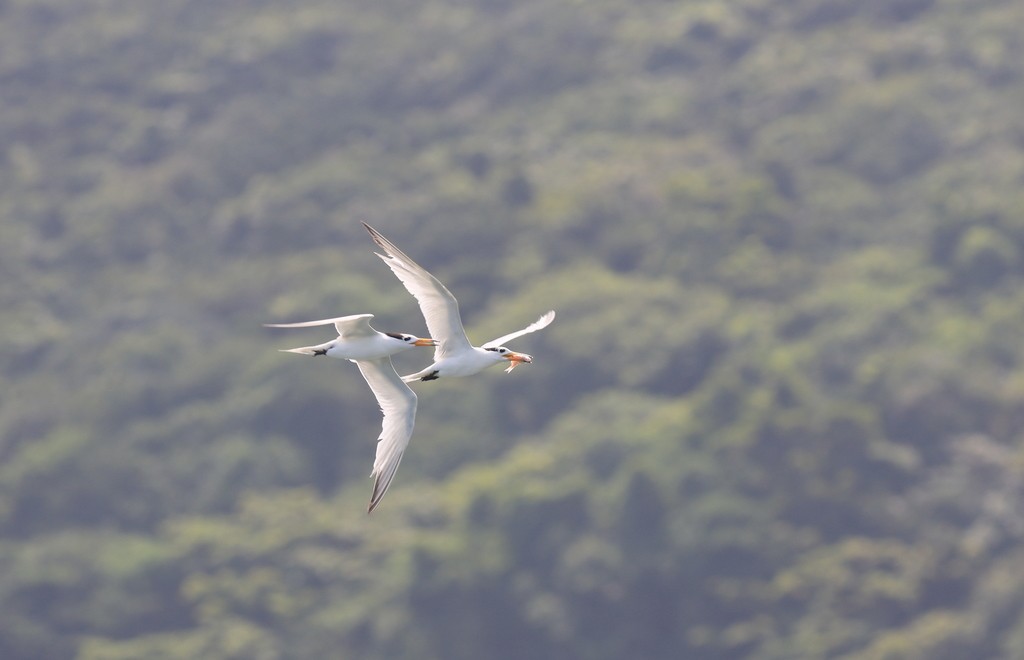Chinese Crested Tern
A species of Crested terns Scientific name : Thalasseus bernsteini Genus : Crested terns
Chinese Crested Tern, A species of Crested terns
Botanical name: Thalasseus bernsteini
Genus: Crested terns
Content
Description General Info
 Photo By allenlyu , used under CC-BY-NC-4.0 /Cropped and compressed from original
Photo By allenlyu , used under CC-BY-NC-4.0 /Cropped and compressed from original Description
The Chinese crested tern (Thalasseus bernsteini) is a tern in the family Laridae, closely related to the Sandwich tern, T. sandvicensis, and the lesser crested tern, T. bengalensis. It is most similar to the former, differing only in the bill pattern, which is the reverse of the Sandwich tern's, being yellow with a black tip. From the lesser crested tern, which it overlaps in wintering distribution, it can be told by the white rump and paler grey mantle, as well as the black tip to the bill, which seen from up close also has a white point. The larger greater crested tern is also similar, differing in its stouter, all-yellow bill and darker grey mantle and rump, as well as in size. It is a critically endangered species, previously thought extinct, with a mere four pairs rediscovered in 2000, nesting in a greater crested tern colony on an islet in the Matsu Islands (territory governed by Taiwan), just off the coast of Fujian Province, China, and wintering south to the Philippines. In the past, it had a wider distribution of the Chinese east coast north to Shandong Province. The decline is thought to be due to past hunting and egg collection for food. This colony may have been protected due to the islands' disputed status, administered by the Taiwanese government but claimed by mainland China, and the military sensitivity of the area which restricted access. The islet has now been declared a wildlife sanctuary. It is possible that other small colonies may yet be found off the Chinese and Taiwanese coasts; migrant birds have been seen near the mouth of the Pachang River in southern Taiwan. The total population is speculated to be less than 50 birds. In 2007 it was estimated that the Chinese crested tern would be extinct in five years if authorities would not protect it. BirdLife International of Cambridge, England, stated that a survey of Chinese experts found that the number of crested terns fell to 50 birds, half the population of 2004. A Chinese survey team led by Chen Shuihua stated that the bird was "on the verge of extinction." It is currently threatened by illegal egg collection, typhoons, and disturbance of nesting colonies by fishermen. There is also a threat of hybridization with the greater crested tern. In 2016, for the first time, Chinese crested terns were found breeding in South Korea. Setting up a new colony in such a faraway area would prove a boon for the species. The species is the county bird of Lienchiang County (Matsu Islands). 
Size
42 cm
Nest Placement
Ground
Feeding Habits
Chinese Crested Tern primarily feeds on small, young shoaling fish. Foraging typically occurs within 5 km of breeding islets, particularly during the breeding season when adults feed their chicks. Chinese Crested Tern has no unique dietary adaptations or preferences reported.
Habitat
The habitat of chinese Crested Tern is confined to coastal zones and open seas. These environments are characterized by their proximity to shorelines where they nest on offshore islands or coasts, typically in areas free from human disturbance. They favor regions that provide abundant food sources such as fish, found in adjacent shallow waters or over the continental shelf.
Dite type
Piscivorous
General Info
Feeding Habits
Bird food type
Scientific Classification
Phylum
Chordates Class
Birds Order
Shorebirds Family
Gulls Genus
Crested terns Species
Chinese Crested Tern